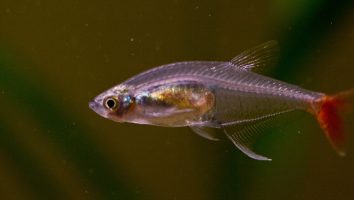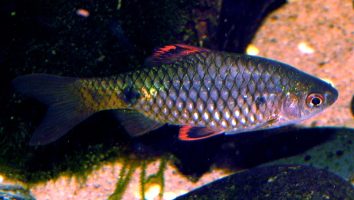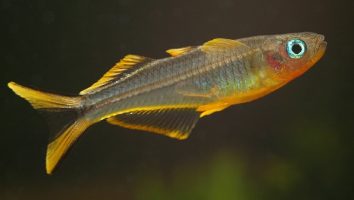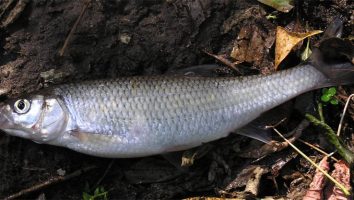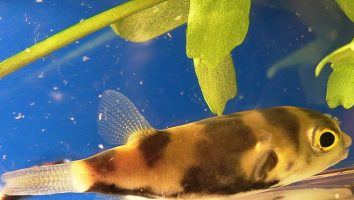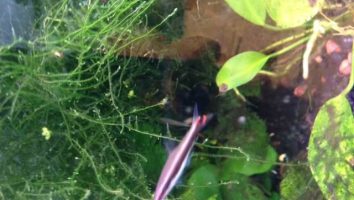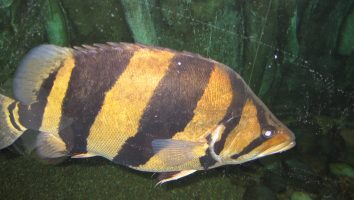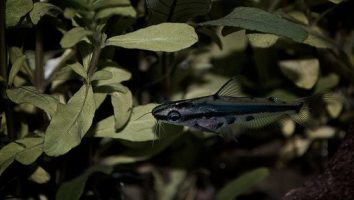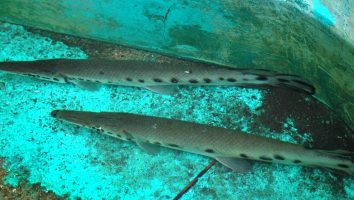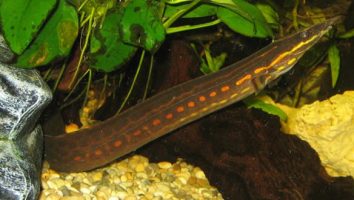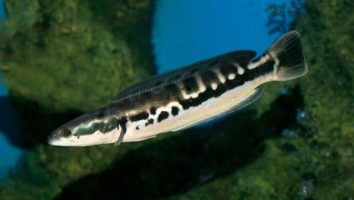The turquoise danio is a beautiful and popular freshwater fish that is perfect for beginner aquarium hobbyists. They are easy to care for and are very active, making them a great addition to any tank.
This guide will teach you everything you need to know about turquoise danio care. You’ll learn about their diet, size, lifespan, and more!
Table of contents
Species overview
The turquoise danio (scientific name: Danio dangila) is a small freshwater fish that’s native to Bangladesh and India.
They’re found in a wide range of habitats, but prefer slow-moving waters with plenty of vegetation. This could be in the form of a river, lake, or even just a pond.
Turquoise danio are very peaceful fish and get along well with other peaceful species. They’re a popular choice for community tanks because of this.
One of the most notable things about turquoise danio is their color. As you might expect from their name, they have a beautiful turquoise hue that really makes them stand out.
Appearance
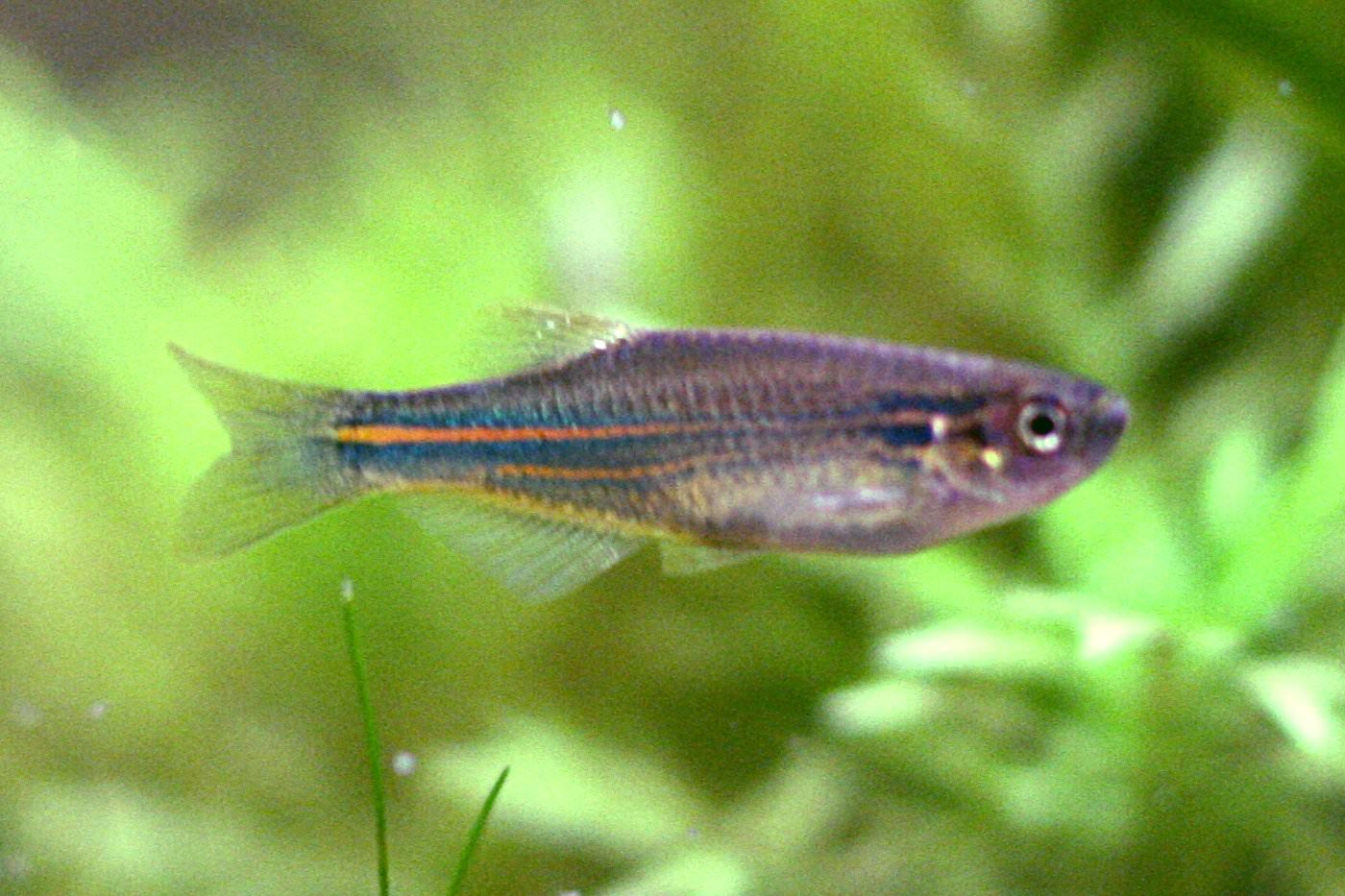
The first thing you’ll notice about Turquoise danios is their color. As you can probably guess from the name, these fish have a very distinct turquoise coloration.
This color is very bright and saturated, and it’s pretty much present all over the body of the fish. The only exception to this is the dark line that runs down the center of their body (from mouth to caudal fin).
The fins on Turquoise danios are also quite colorful. The dorsal and anal fins are both a bright turquoise color. The caudal and pectoral fins are clear with a hint of turquoise. The ventral fins are white.
Turquoise danios have a very long and thin body shape. This makes them quite speedy and hydrodynamic.
The fins on this species are very standard for a small barb. The dorsal fin starts almost halfway back on their body and looks like half a shell. When this fish swims quickly this fin gets tucked back a bit (this makes them look like little turquoise torpedoes).
Their anal and pectoral fins are moderately sized. Turquoise danios have a forked caudal fin that is symmetrical on the top and bottom.
Each of their fins is slightly translucent.
Lifespan
The average lifespan of a turquoise danio is 3 to 4 years. However, there have been reports of some living up to 6 years in captivity.
As with any other animal, the lifespan of a turquoise danio can be greatly affected by the environment and care that it receives.
For example, if the water quality in the tank is poor then the fish will not live as long as those in a well-maintained tank.
Size
Turquoise danio can grow to be about 2.5 inches long. Most of the time, they will max out at about 2 inches. These fish are on the smaller side, which is something to keep in mind when selecting tank mates and planning your aquarium layout.
Tank
Tank Size
The recommended tank size for Turquoise Danios is 5 gallons per fish. So, if you want to keep a school of 5 fish, you’ll need a 25 gallon tank.
While this fish is relatively small, they are very active and need a lot of space to swim. They also prefer to be in groups so we recommend keeping at least 5 fish together.
Water Parameters
The turquoise danio is a freshwater fish that is native to the Ganges River in India. In the wild, these fish inhabit slow-moving waters with plenty of vegetation.
When keeping turquoise Danios in captivity, it’s important to maintain water conditions that closely mimic their natural habitat. That includes temperature, pH, and hardness levels.
Here are a few guidelines to help you create a healthy environment for your turquoise Danios.
- Water temperature: 68 to 77 degrees Fahrenheit
- pH levels: 6.5 to 7.5
- Water hardness: 5 to 19 dGH
- Alkalinity Levels: 3-10 dKH
What To Put In Their Tank
When it comes to setting up an aquarium for Turquoise Danios the process is pretty straightforward.
The number one decoration you’ll want to include is plants. These fish love having plenty of vegetation to swim around and hide in.
There are a ton of great plants you can choose from, but our personal favorites are Hornwort, Water Wisteria, and Java Moss. All of these can handle a little bit of abuse and are easy to care for.
You can also add some rocks and driftwood to their habitat if you wish. Just be sure that these things are firmly in place since Turquoise Danios are known to jump out of the water from time to time.
As for the substrate, sand is always a good choice. These fish like to dig and a softer substrate will be easier on their delicate fins.
Common Diseases
Turquoise danio are a pretty hearty species of fish. They’re not overly susceptible to disease and can live in a wide range of water conditions.
With that being said, they can still get sick just like any other fish. The most common illness that these fish experience is ich.
Ich is a pretty common fish disease that’s caused by a parasite. It’s easily recognizable thanks to the white spots it causes on the fish’s body.
If you notice your fish scratching themselves a lot or see the telltale white spots, it’s important to act fast. Ich can quickly kill your fish if it’s left untreated.
The good news is that ich is relatively easy to treat. There are a number of different medications that can be used to rid your fish of the parasite.
As always, the best way to prevent your fish from getting sick is to maintain a clean and stable tank. A healthy tank will lead to healthy fish who are much less likely to contract diseases.
Behavior & Temperament
The turquoise danio is a peaceful, social creature that does best in groups of at least six fish. They’re relatively active, so a larger tank is better for them. They’re also known to be a bit jumpy, so a lid is recommended.
Turquoise danio
These fish love to explore, so plenty of hiding places and plants are a must. They’re not fussy eaters and will pretty much eat anything you give them.
When it comes to temperament, the turquoise danio is a relatively peaceful fish. They’re not known to cause any problems and usually get along well with other fish.
Tank Mates
The turquoise danio is a small, peaceful fish that does best in a community tank. These fish are social creatures that need the company of their own kind to thrive.
In the wild, they live in large shoals of hundreds of fish. While you don’t need to recreate this in your home aquarium, a group of at least six turquoise Danios is ideal.
These fish are also compatible with a wide range of other species. As long as the fish you choose are peaceful and small, they’ll likely get along just fine.
Here are some of the best turquoise danio tank mates to consider:
- Neon Tetras
- Cardinal Tetras
- White Cloud Mountain Minnows
- Ghost Shrimp
- Guppies
- Corydoras Catfish
- Platies
- Mollies
Breeding
Turquoise danios are one of the easier fish to breed in captivity. They don’t require a lot of special care or attention. As long as you provide them with the right environment, they will do the rest.
Turquoise danios are egg-layers. The female will lay her eggs in a secluded area of the tank, usually among some plants. The male will then fertilize them.
After the eggs have been fertilized, the male will guard them until they hatch. This usually takes about 24 hours.
Once the fry have hatched, they will start to look for food. They will feed on microscopic organisms in the water. You can supplement their diet with baby brine shrimp or crushed-up flake food.
Make sure to keep an eye on the fry. They are very small and vulnerable. It’s important to keep the water clean to prevent them from getting sick.
Conclusion
The Turquoise Danio is a great beginner fish because they’re so easy to take care of.
They don’t need a lot of space, they don’t need a lot of food, and they don’t need a lot of attention.
They’re also very active fish, so they’ll add a lot of movement to your tank.
Overall, we think the Turquoise Danio is a great choice for a beginner fish keeper.

